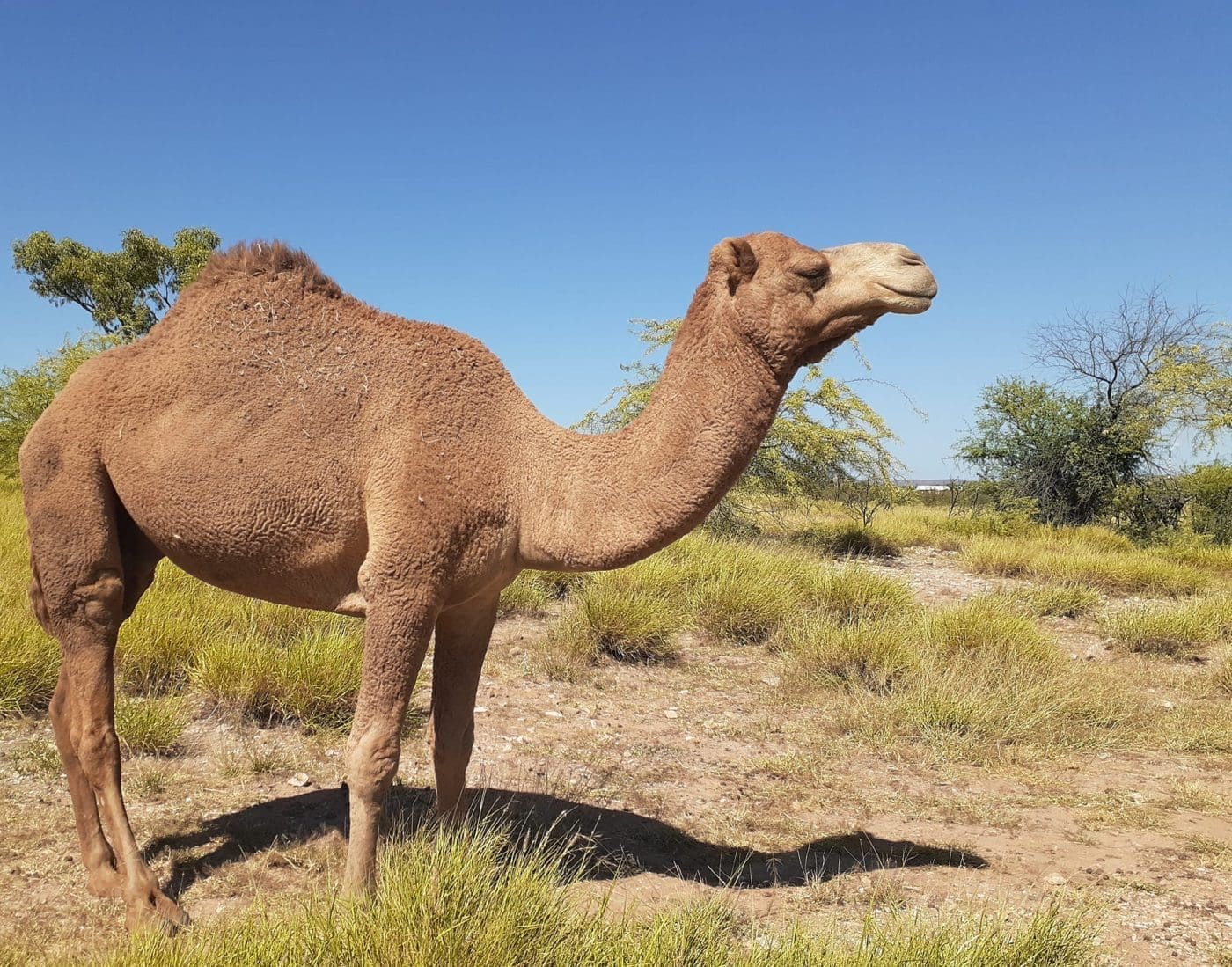
A natural resource management group has been studying the use of camels for weed control in Western Qld. Photo: Paul Keegan
A NATURAL resource management group in Western Queensland has been looking into the viability of using camels to control one of the area’s most prolific weeds.
Prickly acacia is predominately found across North-West Qld, in the Gulf of Carpentaria and in the Northern Territory.
The relationship between camels and prickly acacia has been discussed for many years and some have been using the animals as a means of weed control.
For the past two years, Desert Channels Group has been tracking the behaviours of a mob of camels on Stanley Downs, near Hughenden, using camels purchased from Mount Isa breeder Paul Keegan. The group shared some of its current findings at a field day on the station last week.
“It turns out camels have a very valuable role in helping to control Prickly Acacia and can be integrated well with a cattle herd,” DCQ said in a Facebook post.
With a best stocking rate of 1 camel to 1000 prickle tress, the camels will harvest over 95 percent of flowers and damage and reduce the canopy of a Prickly Acacia tree by more than 30pc, allowing easy access and greater light penetration to the ground.
“Essentially, if a camel can reach it, they will eat it. There was also secondary damage noted on the prickle trees as they stressed the plants and allowed white ants to further damage the trees.”
One of the main concerns about grazing camels is the potential for them to consume other pastures, like Mitchell Grass, and taking it away from higher value livestock.
The DCQ study found that, if grazed in a certain way, the camels can have minimal impact on Mitchell Grass.
“It turns out that for the majority of the year in Mitchell Grass country, it’s not possible to measure their impact on Mitchell grass, and they only start to eat it late in the year when the prickly acacia is water stressed,” the Facebook post said.
“Essentially at the start of the year, their grass consumption is less than 3pc of their diet, but around November if the rains are late and the prickles drop their leaves, it will increase.
“The study area has maintained an 80pc ground cover with the camels, the grass area has increased by 200pc over the study and species diversity is now at over 25 different types of plants in the study area, all the while the camels have maintained a condition score of at least 4 out of 5 and have been able to calve and grow out heathy happy young ones. Not bad for a so-called pest.”
The study also found that camels struggle through thick patches of prickly acacia.
“As the density of the trees increases, the camels get blocked and can’t get through, and this occurs at densities of more than 800 trees/ha,” the post said.
“For properties with Prickly Acacia in the DCQ region, this is generally less than 5% of the property area and so a logical solution is to treat that area with chemicals and any very tall trees, while the camels stop the seed production everywhere else and give you time to treat the remaining areas.”
- For more information contact Desert Channels Queensland
